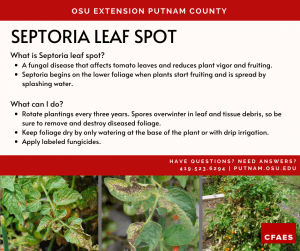Farmers are usually anxious to know how their crops have performed each year – well ahead of harvest. To help with grain marketing and harvest plans, now is a good time to estimate grain yields. Mid to late August is generally a good time to make corn estimations with soybeans occurring during this time or even later as pods continue to mature.
OSU Extension educators across the state have been out and about in fields the past few weeks providing early estimates of corn and soybean yields. As you might expect, reported yields have been variable – coinciding with whether crops received ample rain this season or not. Some areas in Ohio received timely rainfall while others received little to no rain throughout the summer.
A sample of early corn yield estimates have been reported virtually on the Ohio’s Country Journal website and ranged from 78 to 265 bushels per acre. Soybean yields have not yet been reported as the crop continues to mature.
How can you estimate soybean yield?
Estimating soybean yield is very similar to estimating corn yields but results can be more variable due to variable plant stands and seed size. Keep in mind that these estimates become more reliable as the growing season progresses. The optimum time to estimate soybean yield is at the R6 stage where flowering has ceased, the final number of pods are set, and seeds continue to fill.
For soybeans, four yield components are necessary to estimate yield in the field – number of plants per acre, average number of pods per plant, average number of seeds per pod, and average seed weight. As you can imagine, there can be considerable variability in each of these components. Remember that stress and early fall weather conditions can greatly affect seed size.
An average value for soybean seed weight used in the yield estimation equation is 3,000 seeds per pound in a 60 lb. bushel. When below normal rainfall occurs during seed fill this method overestimates yield as seed will be smaller with lower weights and more seeds per bushel (3,500 seeds per pound). When good growing conditions are present during seed fill, yield is underestimated as seed weights are higher with fewer seeds per bushel (2,800 seeds per pound).
To estimate yield, several small sections of a field that equal 1/1000 of an acre are sampled and averaged to give an estimated yield. The steps to estimate soybean yield are as follows:
- Count the number of plants in a length of row equivalent to 1/1000th acre. For 30” rows, this would be 17 ft 5 in or 34 ft 10 in for 15” rows.
- Randomly pull 10 plants within this distance, count the number of pods per plant with at least one seed, and determine the average.
- Randomly select 10 pods from harvested plants, count the number of seeds per pod, and determine the average.
- Calculate the estimated yield in bushels per acre by multiplying the number of plants, times the average number of pods, times the average number of seeds. Divide that total by (number of seeds per pound * 0.06).
- Repeat the procedure for at least four additional sites across the field.
An example for a field with 15” rows: You counted 120 plants in a row that measured 34’ 10” in length. Ten plants were pulled from this row with an average of 30 pods per plant with three seeds per pod. Pods have filled nicely, so an estimate weight of 3000 seeds per pound is used. The estimated yield for that site in the field would be (120*30*3) divided by (3000*0.06), which equals 60 bushels per acre.
